This month we provide an update on the Hôpital de la Miséricorde and analyze controversial plans by Hydro-Québec to integrate an electricity substation into the haunted site. The ghost-ridden Hôpital de la Miséricorde has been empty for years and is starting to crumble. Located on prime real estate in Downtown Montreal...
Welcome to the sixteenth installment of the Haunted Montreal Blog! Released on the 13th of every month, the August 2016 edition focuses on research we are carrying out into the historic Au-Pied-du-Courant Prison. Once the feared jail where rebellious Patriotes were incarcerated and hanged during the Rebellions of 1837-38, today the buildings house the headquarters for the Société des Alcools. A small museum called La-Prison-des-Patriotes, located in the old dungeons of the prison, is reputed to be one of the most haunted locations in Montreal.
Haunted Research
Lurking below the Jacques Cartier Bridge is the historic Au-Pied-du-Courant Prison, a popular location with ghost hunters and paranormal investigators. The sturdy, Neo-Classical limestone building is a dark reminder of one of the more violent chapters in Montreal’s history.
Au-Pied-du-Courant Prison was originally proposed to replace the decrepit and scandal-plagued Montreal Jail on the Champ-de-Mars during the 1820s. Prisoners had both starved and frozen to death while in custody in the old jail, prompting plans for a new prison. Drafted by architect John Wells in 1825, the blueprints were rumoured to be based on the notorious Eastern State Penitentiary in Philadelphia. A change in prison philosophy allowed for more solitary confinement and less fraternizing among the inmates. Designed to house 276 prisoners, Au-Pied-du-Courant Prison opened in 1836 at the foot of St. Mary’s Current, a powerful and dangerous rapid in the Saint Lawrence River.
Barely one year into its existence, the prison was overwhelmed with action when the Patriot’s Rebellion erupted in 1837. This wave of revolutionary furor, despite facing serious setbacks, would go on to shape the very Canada we know today.
In 1837, tensions were simmering over political reform in what was then known as Lower Canada, the territory acquired when the British conquored New France in 1760. In a nutshell, the citizens wanted responsible government and a more effective democracy. At the time, elected officials had almost no power. The movement demanded democratic reforms, such as an elected Legislative Council, as opposed to the system in use whereby members were appointed for life by the British Crown. From the early 1800s, the Parti Patriote, led by James Stuart and Louis-Joseph Papineau, had been agitating for change. Inspired by the American Revolution, the Patriote movement was a liberal, republican and a nationalistic reaction against British domination over what was once a French colony.
After hearing various grievances from the citizens, Papineau wrote “Ninety-two Resolutions” and delivered them to Governor Dalhousie. When the British government rejected his requests, Papineau began to organize protests and assemblies, which sparked passions and stoked calls for a revolution against the colonial government.
After a series of escalating conflicts, the struggle turned bloody. A first armed conflict occurred in 1837. Twenty-six members of the Patriote movement had been charged with illegal activities and chose to resist their arrest. Papineau fled into exile in the United States and rebels began organizing in the countryside surrounding Montreal. On November 23, 1837, the Patriotes scored their first and only victory when, under the leadership of Wolfred Nelson, they defeated British forces at the village of Saint-Denis.
The British government reacted with fury. Commanding Officer John Colborne called thousands of redcoats into action. The British soldiers set their sights on the rebels and defeated them at Saint-Charles on November 25. In Saint-Eustache, on December 14, the British forces were particularly cruel. The Patriotes, led by Jean-Olivier Chénier and Amury Girod, had barricaded themselves in the convent, the Catholic church, the rectory and the manor in the centre of the village. Without mercy, British troops set fire to the buildings and then began shelling the Catholic church with cannon fire.
As the rebels jumped out the windows to escape the blaze, British soldiers picked them off one by one before making a final assault. This disastrous battle lasted at least 4 hours and by the end of it 70 Patriotes had been killed.
The British troops then went on to pillage and ransack the village of Saint-Eustache and terrorize much of the surrounding countryside.
On December 5, the government declared a state of martial law and hundreds of rebels were arrested for high treason. Their destination was the newly opened Au-Pied-du-Courant Prison.
Designed to house less than 300 prisoners, the prison became severely overcrowded when approximately 1300 suspected rebels were packed in following the armed uprising. To punish the political prisoners, in addition to the harsh prison sentences, 58 were deported to Australia and 29 were executed for treason. Twelve rebels were hanged at the gates of Au-Pied-du-Courant Prison, where a scaffold was erected on execution days.
One particularly gruesome execution on February 15, 1839, saw the hanging of a man who some say was falsely accused: notary François-Marie-Thomas Chevalier de Lorimier. One of his co-accused escaped the gallows only by testifying against the father of several children. That day also saw his companions Charles Hindelang, Amable Daunais, François Nicolas and Pierre-Rémi Narbonne drop from the gallows. Some time later a discovery was made in de Lormier’s old cell: on the day of his execution, he had written a heart-wrenching letter to his wife and hid it between some stones. So upsetting was the whole episode, that in 1883 the City of Montreal renamed the street where the prison is located “De Lorimier Street” after a man widely considered to be a martyr.
Other prisoners had to languish in the jail as they served lengthy sentences, including one man named François-Xavier Desjardins, who is connected to a ghost story in the bucolic off-island suburb of Hudson. Desjardins bought a property there in 1824 and converted its main floor into general store. He was a Patriote and began using his store for poltical purposes, including the of stockpiling guns and ammunition in the basement and secret political meetings with other Patriotes.
According to one legend, a young servant girl who was working in the home overheard the plot and felt urged to inform the authorities. However, the Patriotes discovered her plan and, to ensure they were not discovered, murdered her. To cover up the crime, they buried her in the basement of the general store.
Today, the quaint Auberge Willow Place Inn occupies the site and apparently the girl’s mischievous ghost, nicknamed Maude, still haunts the building.
It is said that just after Hallowe’en, during the month of November, her activities become more and more frequent. She is known to sing in the hallways, knock things over, slam doors and stack rocks at the door of Room #8. She also gives off the unmistakable whiff of perfume when passing by. Maude is undoubtedly one of the most infamous ghosts haunting the off-island suburban community of Hudson.
Returning to Au-Pied-du-Courant Prison, following the Rebellion and its violent aftermath, things became quieter. In operation from 1836 to 1912, Au-Pied-du-Courant Prison was eventually replaced by Bordeaux Prison, which is still in use today. Following the move to Bordeaux, Au-Pied-du-Courant Prison was abandoned and sat empty for almost a decade, developing a creepy atmosphere and reputation for being haunted.
In 1921, the old prison was taken over by the Société des Alcools du Québec, which realized its potential as an ideal location to warehouse copious amounts of alcohol in the cool cells under the building. The S.A.Q. later renovated the complex and a 4th floor was added to the building. The original roof was completely replaced and a new wing was also added to the original structure, preparing the way for the head office of the S.A.Q. to move in.
The wall surrounding the prison was partially demolished, with only the east wall and original front gate left intact. The men convicted of war crimes during the Rebellion, today largely seen as martyrs, are now honoured as patriots with a memorial which was built at the site where scaffolds were once erected to execute the rebels.
The work of Alfred Laliberté, the Monument aux Patriotes, was unveiled on June 24, 1926. On each of its three sides, bronze carvings represent patriots Wolfred Nelson, Louis-Joseph Papineau, and Chevalier de Lorimier. The area where the monument is located is now called the Place of the Patriots.
In 1978, Au-Pied-du-Courant Prison was classified as a Historic Monument because of its architecture, history, and connection to the now-revered Patriotes. It was also used as the location for Pierre Falardeau’s film February 15, 1839, which takes place entirely at the prison.
In 2003, a basement museum was opened called La-Prison-des-Patriotes Exhibition Centre. Here visitors can wander the old location of some jail cells and learn all about the failed rebellion through a series of storyboards and exhibitions. Visitors might also possibly experience something otherworldly. According to paranormal investigators, there are several ghosts haunting the old prison and its grounds at the foot of the St. Lawrence River.
According to many sources, the ghosts of the former prisoners and guards still haunt the building and former prison grounds. The apparitions of the executed men and other prisoners who died on the site have been spotted, along with those tasked to guard them. Hidden bodies are also rumoured to be buried on the grounds.
There is said to be a host of paranormal activity in the old prison: shadowy figures, light anomalies, unexplained mists, disembodied voices, weird feelings (unease, not being wanted, not being alone, anger, despair, violent thoughts and physical illness), phantom footsteps, electrical disturbances, objects disappearing and then reappearing, doors and windows opening and closing, lights turning on and off and other unexplained noises.
In June, 2013, Isabelle Verge of the Journal de Montréal interviewed author and ghost specialist Christian Page in an article called “Les fantômes du siège social de la SAQ” (translation: Ghosts of the SAQ’s Headquarters). Page explained that Au-Pied-du-Courant Prison is “one of the most haunted sites in Montreal, according to witnesses.”
He elaborated: “This is where a dozen patriots were executed. The basements of the place are still very gloomy. Today it is the headquarters of the SAQ and some employees will never go down in the basement at night.”
He suggested that the ghosts of the Patriotes who give employees the jitters have returned from the dead because they are “always seeking a certain justice.”
There are all sorts of strange manifestations in the museum. According to Page, “Some claim to have heard sounds, voices, and murmurs, doors that open and close and objects that would move themselves. Some also reported seeing men in uniform, old uniforms. The place is not only haunted by the Patriotes but also by former guards.”
Occasionally, the administration of SAQ allows paranormal investigations, which have turned up many examples of electronic voice phenomena thought to be the spirits of the hanged men. Page suggested that the investigators discovered some interesting paranormal phenomena: “They recorded murmurs, they felt all kinds of presences, and captured mysterious steam-like images that would drift.”
In another case, a local psychic recently visited Au-Pied-du-Courant and detected a paranormal sort of feedback loop on the prison grounds. Almost like a cinematic replay, it involved a ghostly figure, dressed in blue, running quickly. She reported:
“This one was actually very strange. It was a figure which kept running the same line over and over again, always at the same place and in the same direction, restarting at the same location (similarly to a movie just being played on tape). It was just outside the prison building (a good length of it, maybe four meters). I couldn’t tell whether or not it was a guard but I could make out that he was dressed in blue; and running very, very quickly. It didn’t phase or change anything whether we crossed his path or watched.”
With the sightings of so many apparitions, people wonder which former prisoners and guards might haunt Au-Pied-du-Courant Prison. François-Marie-Thomas Chevalier de Lorimier, executed despite his probable innocence, is a good candidate. After passionately defending himself in court, the loving father was hanged for “high treason” because he had demanded responsible government with the Patriotes.
Following his death, his wife was unable to pay family debts, obliging her to renounce his estate, which left the family in poverty and ruin. Ironically, the government eventually conceded to the demands of the rebels and implemented responsible government in 1849. In this light, one might argue that the execution of de Lormier was all for nothing, perhaps prompting his ghost to return in search of justice.
Might another spirit be François-Xavier Desjardins, the former owner of the general store in Hudson? If he was indeed involved in the murder of his servant girl, is it possible that he now roams the world of the living as punishment for his evil deed?
Indeed, with over 1300 Patriotes imprisoned at the height of the uprising, there are a lot of possibilities as to who the ghosts might be.
It is also possible the fleeing ghost is one of the two known prisoners who managed to escape from Au-Pied-du-Courant Prison in 1838. The first was a grocer and Patriote named Louis Lussier who was accused of murdering George Weir, lieutenant of the 32nd Regiment. Incarcerated on January 2, 1838, he made his escape on June 22 of the same year after somehow bribing a prison dog to assist him. Another man named Mr. Cook, who was not a Patriote but just a regular prisoner, broke out of jail with the help of his wife, who brought him carpentry tools during visits. Might the running ghost possibly be either of these two colorful characters?
As for the jail guards allegedly haunting the site, who might they be? More research is needed into who these people were, what circumstances they lived and worked under, how they behaved on a day-to-day basis and whether or not any of them experienced anything tragic or unexpected. With so many ghosts haunting the old prison, there is a lot of speculation into the mystery as to who they might be.
A lot of the unpleasant history that would ultimately shape Canada unfolded at Au-Pied-du-Courant Prison. Today, the site’s museum is testimony to the oppression and brutality of the colonial British government that existed in the 1800s. That ghosts are said to haunt the creepy old jail should come as no surprise given the tragic history that unfolded on the site, when Patriotes were unceremoniously hanged for making very reasonable demands. Could it be true that the spirits are seeking justice in a paranormal afterlife, as suggested by some experts?
On a footnote, in 2003 the Quebec government decided to rename the May 24th “Victoria Day”, named after the stodgy British monarch, as “National Patriots’ Day” (Journée nationale des patriotes in French).
Instead of celebrating an oppressive and uptight queen, Quebec chose to venerate the rebels who opposed her in 1837 at the price of their lives. Whether or not this gesture appeased any of the ghosts haunting Au-Pied-du-Courant Prison is a matter of speculation. Only one thing is certain: Au-Pied-du-Courant Prison is widely regarded as one of Montreal’s most haunted sites. Enter at your own risk!
Company News
The public season is in full swing and Haunted Montreal now offers Ghost Walks in both English and French! This year both Haunted Griffintown and Haunted Mountain are being offered, alternating on Friday nights. French tours are at 8:00 p.m. and English tours are at 8:30 p.m.
Friday, August 19 Haunted Mountain
Friday, August 26 Haunted Griffintown
Friday, September 2 Haunted Mountain
Friday, September 9 Haunted Griffintown
Friday, September 15 Haunted Mountain
Friday, September 23 Haunted Griffintown
Friday, September 30 Haunted Mountain
Friday, October 7 Haunted Griffintown
* Stay tuned for our Hallowe’en Season, running from October 8 – 31!
Tickets can be booked in the 2016 Tours section.
Haunted Downtown is currently being revised before translation, but is still available for private tours for groups of 10 or more people (in English only, for the moment). Haunted Griffintown and Haunted Mountain are also available for private bookings, in both English or French, subject to availability.
Finally, we invite clients who attended a ghost walk to write a review on our Tripadvisor page, something that is very helpful for Haunted Montreal in promoting its tours.
For those reading the blog who want to receive a new Montreal ghost story on the 13th of every month and stay updated, please sign up to our mailing list.
Coming up on September 13: Poltergeist on Sainte-Famille Street
According to long-held rumours, a house on Sainte-Famille Street has long been haunted by a poltergeist. Situated between Pine Avenue and Prince Arthur Street, the home has experienced some very strange phenomena. Legend has it that in 1929 mysterious knots started to appear in the curtains. Slowly but surely, everything in the house that could be twisted into knots was tied up, such as bed sheets, towels, shower curtains and articles of clothing. While some say that the youngest daughter of the family who owned the house was unconsciously tying knots all over the place, a later tenant claimed that he found knots in his own curtains and bed sheets one night. Is a poltergeist causing these paranormal disturbances, and if so, why?
Donovan King is a historian, teacher and professional actor. As the founder of Haunted Montreal, he combines his skills to create the best possible Montreal ghost stories, in both writing and theatrical performance. King holds a DEC (Professional Theatre Acting, John Abbot College), BFA (Drama-in-Education, Concordia), B.Ed (History and English Teaching, McGill) and MFA (Theatre Studies, University of Calgary).

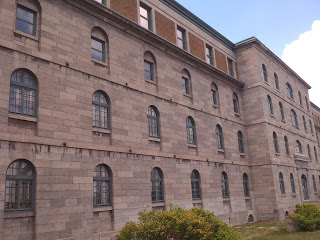
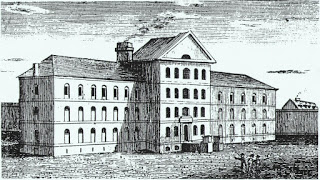
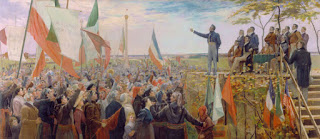
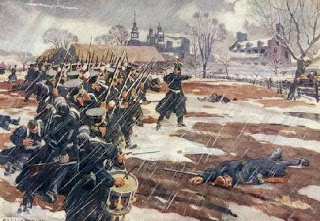
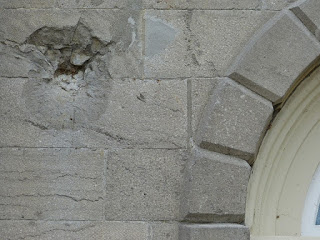
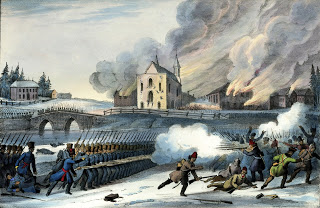


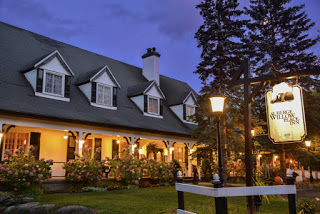
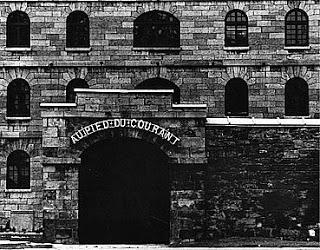
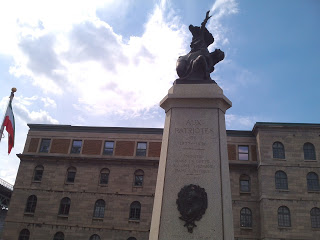



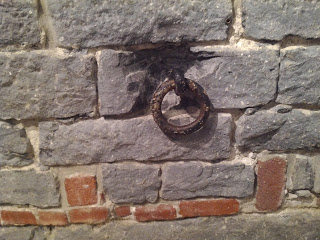
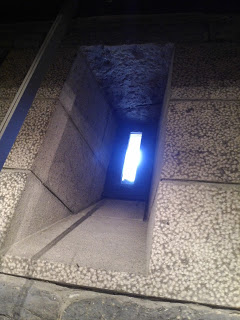
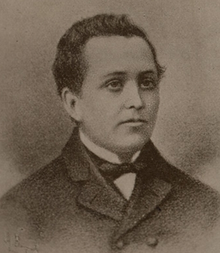

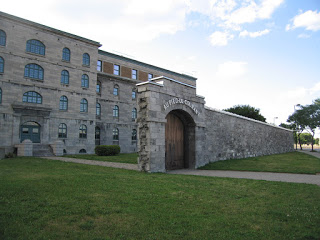


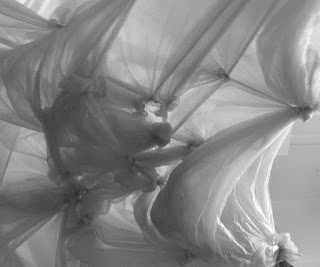



The picture of the prison seems to be not that scary but I always believe that don’t judge the book by its cover. It may be not scary to look at surely it’s haunted.